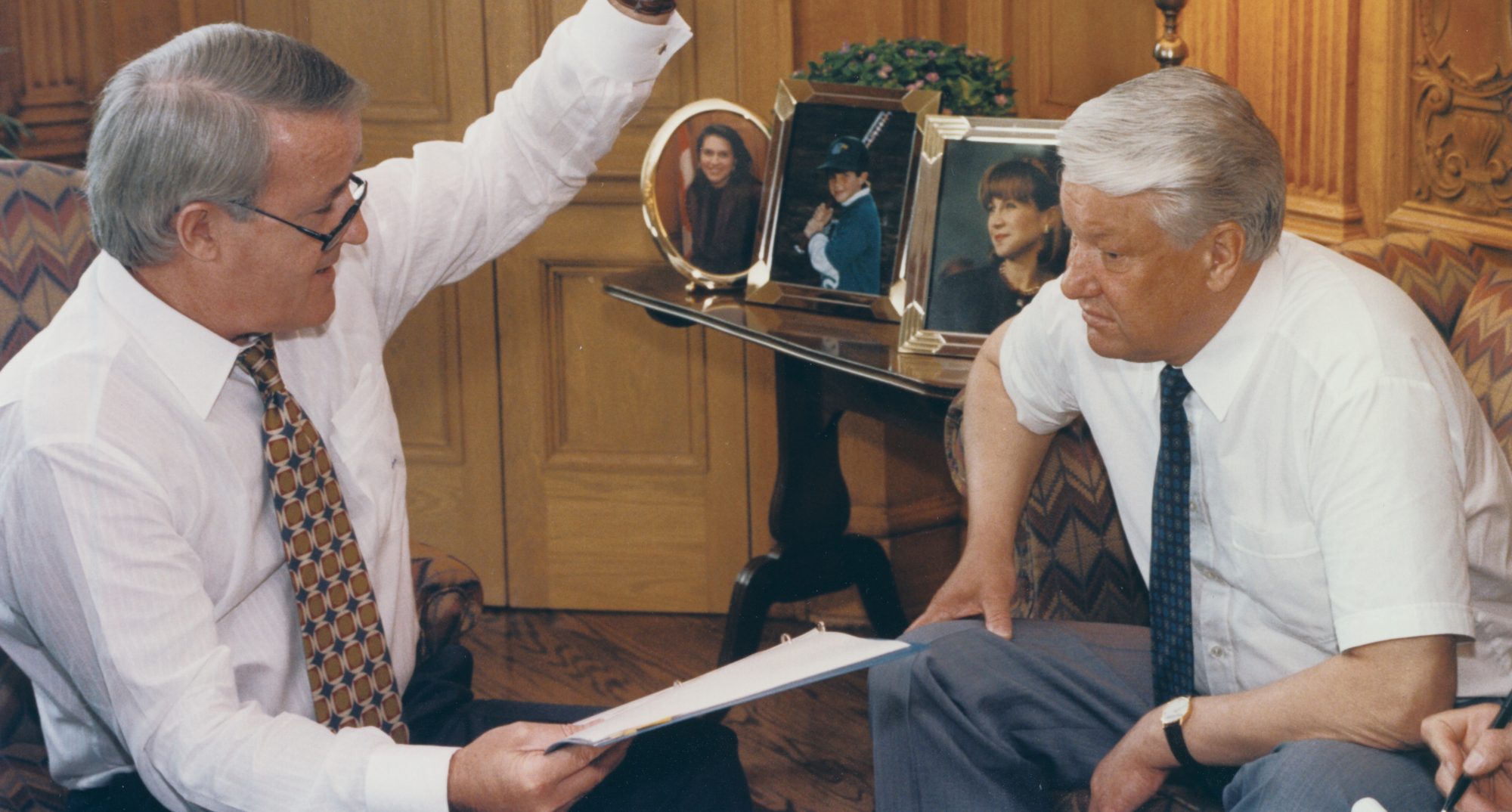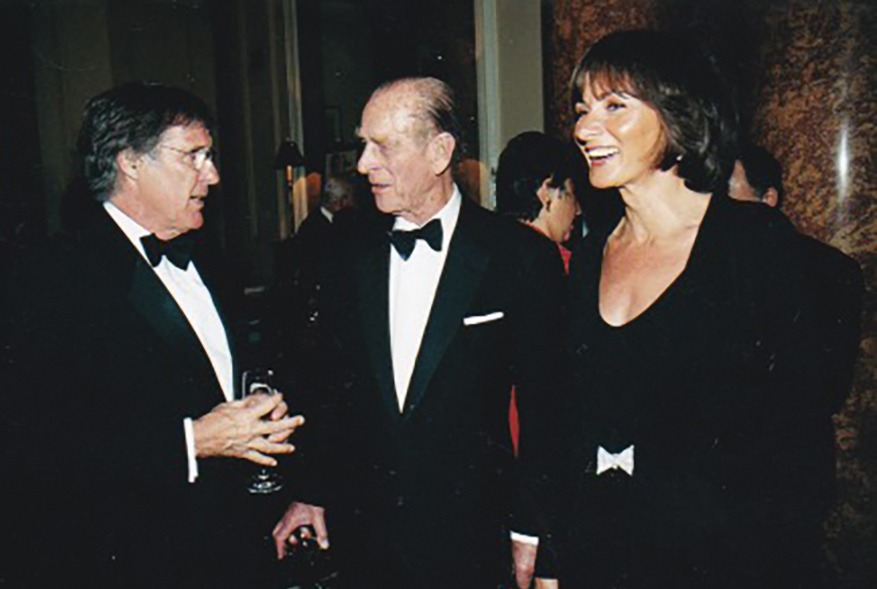May You Live in Canadian Times

Having served in some of the most senior diplomatic postings around the world under a number of Canadian prime ministers over half a century, Jeremy Kinsman has witnessed firsthand the evolution of Canada’s international image. One major change? People no longer think Canadians aren’t interesting.
Jeremy Kinsman
“Oh. You’re Canadian?”
In Delray Beach, Florida, meeting one more snowbird holds little mystery. But for a local’s first-time encounter in Ulan Bator or Timbuktu, a Canadian can seem exotic. In London or Berlin, Shanghai or Santiago, people think they know us from hearsay but their impressions can be distorted.
In the autumn of 2000, before 9/11 changed our world, when England was still basking in apparent prosperity and self-satisfaction, I opened London’s Sunday Times. Headlining the Arts section was an interview with Margaret Atwood, short-listed for the Booker Prize for the year’s best novel in English. The journalist declared he had just met that “rarest” of species—“an interesting Canadian.”
Being the Canadian High Commissioner to the UK, hoping to upgrade Canada’s image to a decent approximation of reality, my first temptation was despair. But is being “interesting” really so unexpected of a Canadian? And what in today’s world is interesting?
Artistically, notably in fiction, we compete internationally. After all, Atwood won the Booker. And so did Michael Ondaatje, while Alice Munro won the Nobel. Our artists and innovators are everywhere.
Only a few years ago, The Economist’s irrepressible impulse to inject every piece filed from Canada with lame parenthetical asides about moose, bears, and maple syrup finally pushed me over the edge. I wrote to ask how, amid their catastrophic post-Brexit mess, a serious British paper could so easily sneer at another country that actually works, from which the British have hired competent Canadians to manage such iconic assets as the Bank of England, the Royal Mail, and the Lawn Tennis Association. And they did, more or less, knock it off. The Economist can again be enjoyed by Canadians without acid reflux from schoolboy taunts.
Of course, how we appear to others depends on who’s looking.
When a student in Paris, I noticed I got kinder treatment than American, German, or Iranian classmates from traditionally salty concierges, diffident train conductors, or morose cafe table neighbours, once they heard I spoke French though I looked more or less American. (Decades later, other travelling students would put maple leaf flags on their backpacks for such better treatment from locals.) Most French back then understood that Canadians came through for France in the War without trying to take anything over, something that De Gaulle forgot in his separatist dotage in 1967.
Britain’s War, their “Finest Hour,” bestowed a very different narrative but left some recognition for the more than one million Canadian servicemen and women who passed through Britain to fight in the great European wars of the 20th century. But seeing one of Canada’s young tennis phenoms—Denis Shapovalov—wearing daring floral tennis shirts and polka dotted shorts, draw love from European crowds, I get that our general image has changed, that Canada has gone from being soldierly and solid to becoming sort of “cool”.
Justin Trudeau recently shot across the world as a fresh face who said hopeful things, and got a lot of initial attention from people hungry for some good news. Sunny ways suited their idea of Canada’s example. But I wonder if we look better because most other people are feeling sort of bad? For postwar Europeans, Canada became mostly about opportunity, an emigration destination until Europe’s economic recovery gained traction. As Liberal MP Alfonso Gagliano used to say on visits to his native Italy, “I sailed to Canada in search of labour and returned as Canadian Minister of Labour!”
Globally, tens of thousands of Canadian aid workers, engineers, doctors, teachers, diplomats, and peacekeepers have spread over Africa, the Caribbean, Latin America, and South Asia, where they seem like comfortable North Americans, but with a difference; they listen.
Meanwhile, the United States is busy throwing its vast weight around, now more than ever. Under “good presidents,” it was for good causes. But when the effort turned to wars against poorer people in Vietnam and Iraq, a notion grew of Canada as the “other North America,” an image we didn’t seek, but began to take on from the eyes of others who saw Canada as fair-minded. At the United Nations in the 1970s, Canadians became the default choice to chair meetings meant to bridge differences between East and West and North and South. Pierre Trudeau invited Canadians to work that space between hawkish Washington and a truculent world.
When he burst on the scene in the template-shifting chaos year of 1968, Trudeau struck the world as a completely different Canadian—intellectual, glamorous. Truth be told, he struck us the same way, and we hoped it would rub off.
His search for fairer North-South accommodation didn’t make many waves in geo-politically obsessed Washington, except with the idealistic Jimmy Carter, but it enlarged Canada’s international playbook. Allan Gotlieb, Canada’s best-known ambassador to the U.S., argued that our best card globally was actually showing how close we were to the world’s superpower, believing our proximity and intimacy with America earned us reach and influence with others.
When presidents from Reagan to George H.W. Bush and Clinton responded to Soviet leader Mikhail Gorbachev’s move to end the Cold War, Canadian leaders—Brian Mulroney, then Jean Chrétien—were critically helpful allies trying to widen one-world cooperation. U.S. Secretary of State James Baker credited Canada with the vital talent for “getting things right.” So did the post-Soviet Russians, at first.
Canada’s internationalism and attention to human security also created real influence, at least among the internationalist like-minded. On issues like the International Criminal Court and land mines, Canada challenged the big powers and led the way. By 2002, the European Union recognized Canada as one of its six strategic partners—with the US, Russia, China, India, and Japan.

Alas, our early post-Cold War hopes for a harmonious North Atlantic-Europe axis, “from Vancouver to Vladivostok,” and for a new era of global consensus fuelled by new technologies, were derailed by the rise of divisive and competitive nationalism, populist sectarianism, and the downsides of globalization.
Three events in the new millenium sharpened Canada’s image.
When fanatical enemies of the US changed the global agenda on 9/11, the American mood became vengeful and inward. Canada’s working assumption that we were a neighbourly “buddy” became dulled as our shared border hardened. We strained to make it work. But we didn’t buy into the catastrophic American march to war against Iraq in 2003 that has turned the Middle East into the world’s first “failed” region.
In 2007-08, Canadian governments did not succumb to the global urge of greed and carelessness that caused banking scandals and financial breakdown elsewhere, that undermined global confidence in political and financial leadership and democracy’s commitment to fairness.
But in a troubled and uncertain world, what’s really most interesting to others is what solves their problems, especially if it seems fair. These days, German ministers stream to Canada to explore how we manage pluralism, via community-sponsored immigration settlement, neighbourhood policing, and other integrating techniques learned over time. As global headlines turned to violence, jihadism and mass migration, Canada’s image clarified as a society that succeeded in areas where others were struggling. It became increasingly clear that as one of very few settlement immigration countries left, which greeted new landed immigrants with a “Welcome Home” card, the composite face of Canadians had changed.
Managing inclusivity became our most admired brand. As long as our new Canadians join us in a collective cause, it works. When politicians corrupt foreign policy choices for electoral purposes in order to play to domestic constituencies, it undermines faith abroad in Canada’s value as an international honest broker and consistent defender of human rights.
So, while we quarrel among ourselves over our own stuff, and respective styles, we should also acknowledge that our ways look good from the outside. We’re a place that seems to work for most of its citizens, most of the time, and if others ponder the “genocide” against native women, we’ll at least get some points for transparency.
In the off-colour White House these days, it is a slur to call someone a “globalist.” A “do-gooder” is similarly mocked by populist right-wing nationalists in Italy (“bonfattore”) or Germany (“gutmensch”). The Iran Nuclear Accord, the Trans-Pacific Partnership, the Paris Accord on Climate Change, and other key agreements on trade, migration, and security aren’t disposable just because a nationalist-populist U.S. President wants to make them so.
Let’s face up proudly to our Canadian vocation to be globalist do-gooders. It’s partly a curse, but one we have earned and need to earn every day. It comes with the obligation to be willing to commit to the defence of democracy, inclusivity, and multilateral cooperation.
As a brand, in today’s world, that ought to be “interesting” enough.
Contributing writer Jeremy Kinsman is a former Canadian ambassador to Russia, the UK and the EU. He is affiliated with University of California, Berkeley, and is a distinguished fellow of the Canadian International Council.
